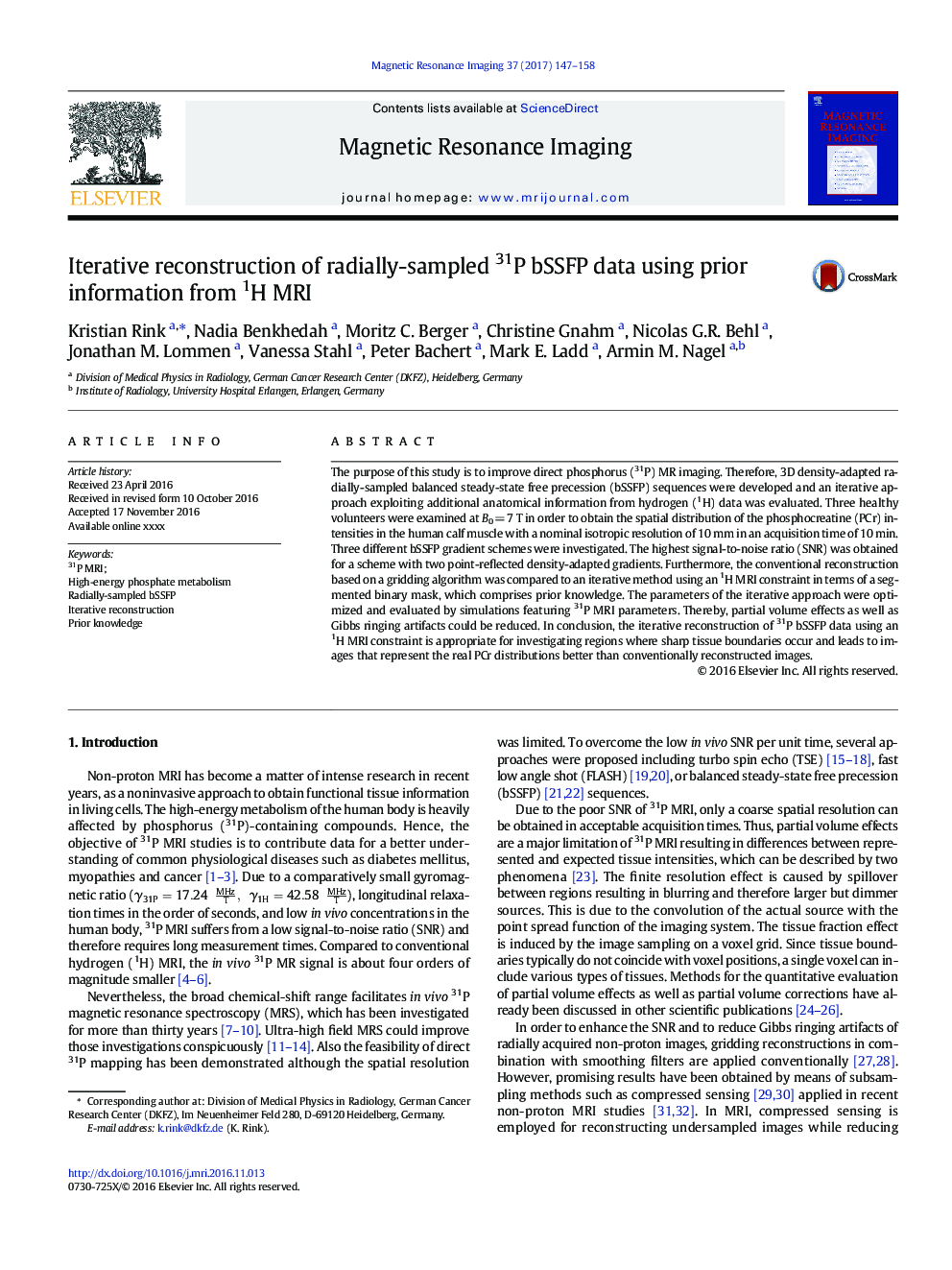| Article ID | Journal | Published Year | Pages | File Type |
|---|---|---|---|---|
| 5491400 | Magnetic Resonance Imaging | 2017 | 12 Pages |
Abstract
The purpose of this study is to improve direct phosphorus (31P) MR imaging. Therefore, 3D density-adapted radially-sampled balanced steady-state free precession (bSSFP) sequences were developed and an iterative approach exploiting additional anatomical information from hydrogen (1H) data was evaluated. Three healthy volunteers were examined at B0Â =Â 7Â T in order to obtain the spatial distribution of the phosphocreatine (PCr) intensities in the human calf muscle with a nominal isotropic resolution of 10Â mm in an acquisition time of 10Â min. Three different bSSFP gradient schemes were investigated. The highest signal-to-noise ratio (SNR) was obtained for a scheme with two point-reflected density-adapted gradients. Furthermore, the conventional reconstruction based on a gridding algorithm was compared to an iterative method using an 1H MRI constraint in terms of a segmented binary mask, which comprises prior knowledge. The parameters of the iterative approach were optimized and evaluated by simulations featuring 31P MRI parameters. Thereby, partial volume effects as well as Gibbs ringing artifacts could be reduced. In conclusion, the iterative reconstruction of 31P bSSFP data using an 1H MRI constraint is appropriate for investigating regions where sharp tissue boundaries occur and leads to images that represent the real PCr distributions better than conventionally reconstructed images.
Related Topics
Physical Sciences and Engineering
Physics and Astronomy
Condensed Matter Physics
Authors
Kristian Rink, Nadia Benkhedah, Moritz C. Berger, Christine Gnahm, Nicolas G.R. Behl, Jonathan M. Lommen, Vanessa Stahl, Peter Bachert, Mark E. Ladd, Armin M. Nagel,
